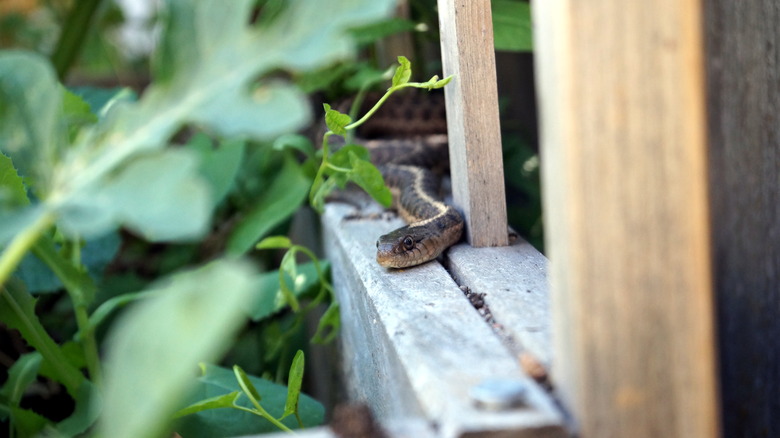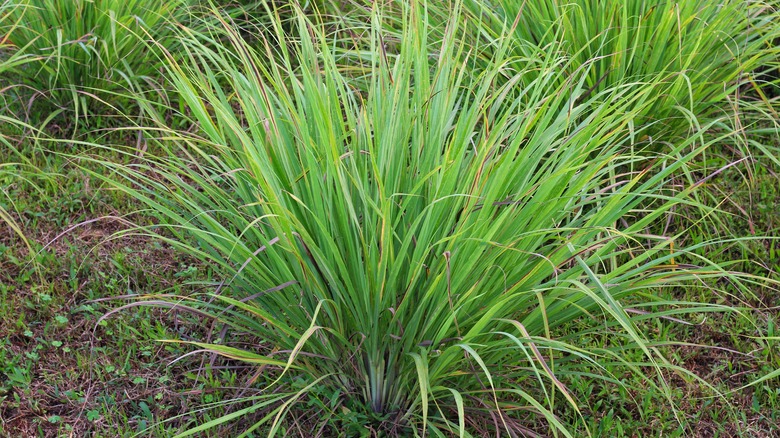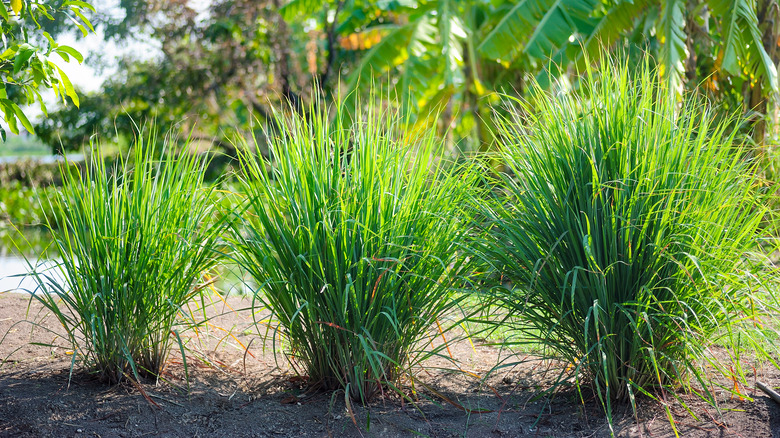The Plant That Creates An Aromatic And Physical Barrier To Keep Snakes Away
Though many snakes are harmless to humans, seeing them in our gardens often makes us a little jumpy, even if we don't suffer from ophidiophobia (fear of snakes). But there are more concrete reasons to discourage snakes from hanging out in your outdoor space. Planting lemongrass is a natural, humane way to keep snakes from slithering into your yard or garden.
Snakes don't damage buildings by making nests, they don't eat your flowers, and they often help control pests like mice and moles. So why might you want to keep snakes out? Venomous species like copperheads and rattlesnakes pose an obvious threat to your family and pets. Non-venomous snakes are less worrisome, but they can eat beneficial species like earthworms and toads that you'd like to keep around. Another important reason to keep snakes out is for their own good. Snakes hiding in your yard or garden are at risk of being stepped on, attacked by cats and dogs, or run over by lawnmowers. Keeping them at a distance is safer for both people and snakes.
Why lemongrass works
Lemongrass (Cymbopogon citrates) contains citronella, which is known for being a natural mosquito repellent — and it has a similar effect on snakes. Snakes rely on their strong sense of smell when they hunt. They even have a specialized organ on the roof of their mouth, where they transfer scent molecules using their forked tongue, allowing them to not only smell but taste the air. Because they rely heavily on this supercharged scent ability to locate prey, they dislike strong smells that overpower their senses and make it harder to sniff out their next meal.
Citronella from lemongrass is one of these scents. In parts of the world where venomous snakes are more common, like Asia and Africa, lemongrass is often planted around houses, schools, yards, and rice paddies to deter these dangerous visitors. Other popular scents that keep snakes out include cinnamon, garlic, and sulfur.
Lemongrass has the added benefit of acting as a physical barrier to snakes. Its tightly spaced leaves have sharp edges, which are uncomfortable for snakes to move through. Between the plant's physical structure and unpleasant smell, snakes who encounter it usually prefer to slither somewhere else.
How to grow lemongrass
Plant lemongrass around the perimeter of your yard or garden to create a snake-proof barrier. Lemongrass likes loamy soil with high organic content, so amend your soil with compost as needed before planting. Lemongrass will grow a lot, so space your plants at least two feet apart. Once the plants mature and fill in that space, you'll have a natural fence against snakes. As your plants get bigger, you can also clip lemongrass leaves and stalks and scatter them around your yard to spread the scent.
Lemongrass is a tender perennial, meaning it is fairly susceptible to cold. In USDA zones 8 and lower, it may not survive the winter outside, You can keep it in containers and bring it indoors for the winter, but this will make it less effective against snakes because they may be able to slither between pots. A better solution is to grow it as an annual. Fertilizing it every week or two will help maximize growth. Before the first autumn frost, remove approximately six inches from the plant's base, with roots attached. Pot these cuttings, keep them inside during the winter, then use them to replace your outdoor lemongrass when spring arrives. Lemongrass is a tropical plant, so experts recommend watering and misting it often. Take good care of the plants to maximize their snake-deterring benefits.


